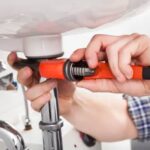Sewer line issues can be a homeowner’s nightmare, often involving landscape upheaval and prolonged periods of construction. The emergence of trenchless sewer pipe repair offers a sigh of relief by providing a nonintrusive, efficient solution to sewer line problems.
Unlike traditional methods, trenchless repair eschews excessive digging in favor of rehabilitating pipes from the inside out. Ideal for dense urban spaces or areas where traditional excavation poses risks to the environment, trenchless sewer lining is a forward-thinking approach that conserves both time and resources.
Key Takeaways
- Understanding the basics of trenchless sewer lining technology.
- Advantages of trenchless sewer repair over traditional methods.
- The environmental impact of trenchless sewer lining.
- Long-term benefits for homeowners and municipalities.
Advantages of Traditional Sewer Repair
When comparing trenchless sewer repair with its conventional counterparts, the list of advantages is extensive. Key benefits include significantly diminished site damage since the need for trench digging is eliminated, preservation of existing landscaping, hardscaping, and infrastructures, and reduced disruption to residents’ daily lives.
Financial advantages also become evident as reduced workforce requirements, speedier repair timelines, and diminished machinery use reduce overall repair costs compared to traditional methods.
How Trenchless Sewer Lining Works
The trenchless repair process commences with the thorough cleaning of the compromised pipe. A resin-coated liner is then meticulously inserted and expanded to fit snugly against the pipe’s interior walls.
Depending on the method, a curing process follows—either ambient cured-in-place techniques or thermal cured-in-place methods—hardening the resin and effectively creating a new pipe within the old one. This seamless liner rectifies damage and strengthens the pipe to avert future problems.
Environmental Benefits
Environmentally, trenchless technology is a clear winner. Traditional sewer repair work typically involves heavy machinery, copious amounts of dirt disposal, and significant land and habitat disruption. Trenchless methods circumvent these issues, thus substantially reducing the overall environmental impact.
The integration of trenchless repair methods supports the larger goal of environmental stewardship by preserving the original ecology of repair sites, minimizing the amount of material destined for landfills, and reducing the carbon emissions associated with traditional construction activities.
Cost Analysis
The financial implications of trenchless sewer repair can be long-ranging. The initial outlay for trenchless procedures can appear to be high; however, when viewed from the perspective of entire project expenses—including repair speed, reduced labor, and avoidance of collateral property damage—trenchless methods prove to be cost-effective.
Moreover, the durability and extended lifespan of repaired lines mean fewer repairs in the future, ensuring cost savings over the long term. Those interested in the economic comparison between traditional and trenchless repair will find valuable insights at the Trenchless Technology Center, which provides comprehensive information about cost efficiency and other benefits.
Choosing the Right Service Provider
Another essential factor in trenchless repair is selecting a suitable service provider. Due to the specialized nature of the work, it is vital to entrust your sewer repair needs to experienced professionals who use state-of-the-art equipment and have an in-depth understanding of current methodologies.
Additionally, providers should have a robust portfolio showcasing successful applications of trenchless repair and a commitment to observing local regulations and industry standards. The quality of service will directly influence the longevity of the repair and the overall satisfaction of the client.
Common Challenges and Solutions
Although trenchless sewer lining is a robust and effective technology, it has challenges. For instance, service providers must ensure the existing pipes are thoroughly cleaned so the resin adheres correctly, which requires advanced cleaning methods and attention to detail.
Correct liner curing is also vital and can be challenging in areas with extreme weather conditions. Providers using the latest technologies and materials can overcome these challenges, ensuring a successful and lasting repair.
Long-term Implications for Properties
Trenchless sewer lining is about more than just remedying immediate issues; it represents a long-term investment in property infrastructure. It provides homeowners with a renewed sense of security against potential sewer line failures and, by extension, can contribute to increased property values.
At a municipal level, adopting trenchless methods results in reduced road closures, less traffic disruption, and improved civic infrastructure, leading to enhanced livability within the community.






